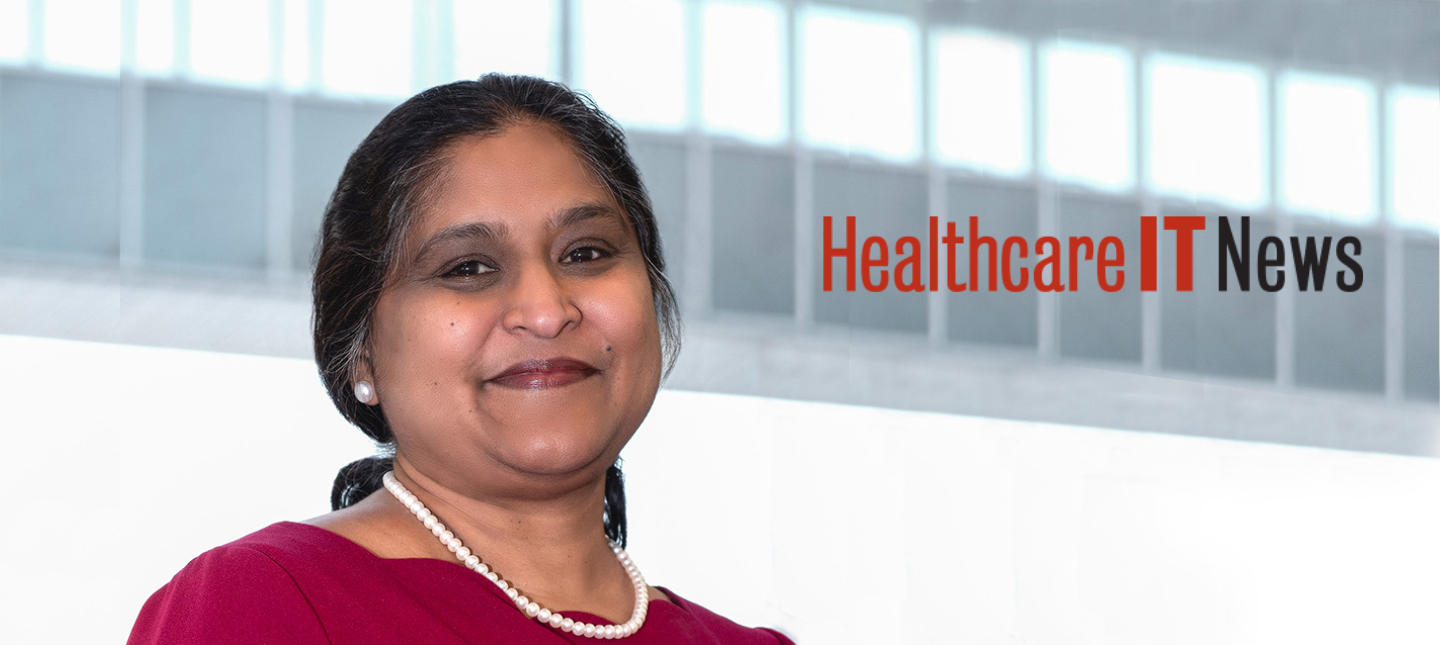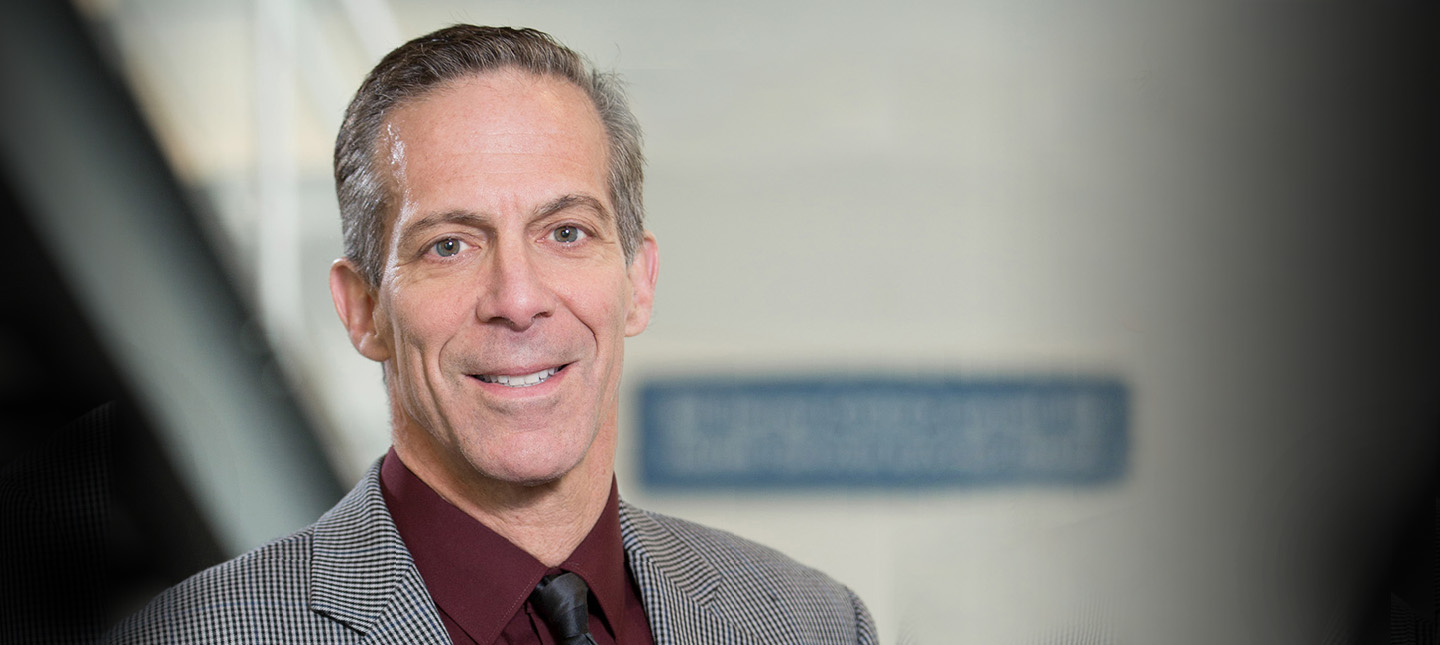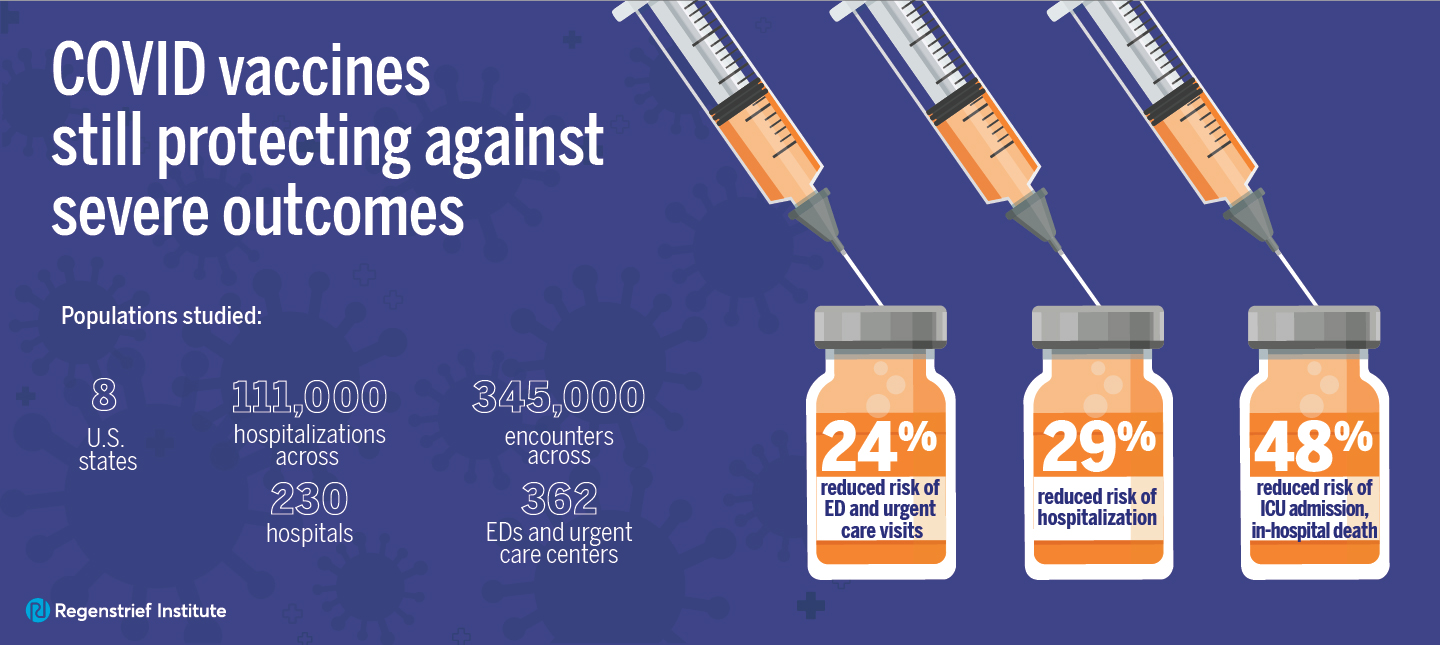How can better access to data change a state’s level of health? Learn about the unique work of Indiana’s Management Performance Hub, featuring discussions with Darshan Shah and Josie Fasoldt, and learn what you can do to help solve the opioid problem, with more from Jim McClelland.
Transcript
(00:00) Phil Lofton:
From the Regenstrief Institute, this is The Problem. The Problem is an anthological podcast dedicated to fighting the hydras of healthcare, those complicated big, hairy issues that impact healthcare on the societal level. Every season you’ll hear about a different big, massive problem and each episode within that season will feature a different discipline or industries take on that problem, how it’s being addressed, how it’s being talked about, and the trials and triumphs of those involved clinically and personally. This season is all about opioids. Over the next few episodes, the problem, we’ll talk about how we local communities, Indiana and the United States got into this crisis, how people suffering from addiction are treated and how the needle can be moved on addiction. This is a podcast for anyone who might be interested in how these problems have developed and are approached. You don’t need a PhD to be affected by them, so you shouldn’t need a PhD to learn more about them. Regenstrief institute is a global leader dedicated to improving health and healthcare through innovations and research and Biomedical Informatics, Health Services, and Aging. Welcome to The Problem.
(01:11) Phil Lofton:
Hey everybody. Welcome back. In the first half of this episode, we spoke with executive director for drug prevention treatment and enforcement, Jim McClelland, as well as deputy state health commissioner of health, Pam Pontones about Indiana’s efforts to curb the opioid epidemic. In our conversation, they stress collaboration and teamwork for achieving policy goals. In this half of the episode we’ll learn about the work of the Indiana management performance hub, a unique organization that’s connecting databases across organizations and empowering them, especially first responders to take new interesting approaches. Welcome to the problem. I’m your host, Phil Lofton.
(01:46) Josie Fasoldt:
I’m Josie Fasoldt. I’m a director of engagement and analytics for the management performance hub, at the state of Indiana and I help support health and human services agencies and organizations for data driven solutions in state government.
(02:00) Darshan Shah:
And My name is Darshan Shah. I get the privilege of serving as the state’s chief data officer and lead the team at the Management Performance Hub. Last year through the vision of our governor, Governor Holcomb and our legislature, we were formally codified into law. I mean it passed the house and the Senate back in Q1 of last year. , and then in July, first of last year, we formally were codified into law, which allows the management performance hub to have sustainability, you know, going forward to be this data analytics center for the state. You know, our role very much is to, drive and improve the lives of Hoosiers through data innovation and collaboration. And we really focus a lot on that c on the collaboration piece because fundamentally we don’t create any value unless we create value through the agencies and the entities that we, that we serve.
(02:57) Darshan Shah:
I heard this in a different slide somewhere and somebody called it the BLT slide, , which I consider the mph here as when you think about those three letters we’re the l and the t the, we have the ability to be able to help kind of reduce roadblocks from a legal perspective and from a technology perspective. But we still rely on the entities that we serve to for the business use cases to ensure that improved operations at services, improve policy, you know, that type of thing. I always describe what we do from an MPH standpoint. A lot of people like to take the word data and analytics and squish it together as data analytics, we are very much first and foremost a data shop. We do the analytics when the data is sensitive and it can’t be unlocked and shared with the external community nearly as easily.
(03:41) Darshan Shah:
But ideally in partnerships and being able to partner with these agencies and entities externally get them the data and allow them to run the analysis to be able to drive improved operations services. Programming is obviously ideal. We work with a number of agencies on the opioid epidemic and Josie will likely be diving into that a little bit further and deeper. And we work with our Family and Social Services Agency on medicaid challenges. We have worked with the auditor’s office, you know, when it comes to financial transparency, we’ve worked with the Department of Education Commissioner for Higher Education and Workforce Development on Education and Workforce Related Challenges, Department of Correction on recidivism. And the list goes on and on. , those are all internal externally though we get a chance to work with you and your friends here at Regenstrief but also working with IBRI in Brookings and CACP and Goodwill and the list goes on. But fundamentally we want to be that transmitter that the organization that makes data available from the state and gets in the hands of key partners who can do great things with it.
(04:40) Phil Lofton:
How has the MPH’s work been used to combat the opioid crisis?
(04:46) Josie Fasoldt:
Sure. So the mph has been used primarily by a drug data working group that’s connected to the Indiana Commission to combat drug abuse. And I’ll talk a little bit about that commission because it’s the stake holders there that have just really made the state of Indiana successful with using data to combat the crisis. So in 2017 governor Eric Holcomb, he established a position for the director of treatment prevention and enforcement because he really saw a need to bring both public health and public safety subject matter experts, program directors, ADA people together so that we can really think about this crisis more effectively and be more proactive instead of reactive. And Jim McClelland is that director for the state of Indiana with the governor’s office and his team corrals, all of us together for this work and the commission has a mission statement that they want to have a data driven system so that we can as a state look at substance use disorder more holistically and help individuals and communities get to a place where they can improve, recover and build their communities and just a more positive way and the mph with this drug working group, when we were thinking about the state of driven system, we heard from our state agency partners kind of two different things.
(06:11) Josie Fasoldt:
One was that they needed to visualize one another’s data and see one another’s data in more real time before data was siloed in their specific agency and area. But they really wanted to share and understand what was happening with one another’s information. But then there was also this need to be able to see outcomes for people more holistically. So for example, the Department of corrections wanted to know how many of those that leave a state prison go on to die of an opioid overdose or have a Naloxone event. The Department of corrections doesn’t know that because their systems were not linked with other state systems, but that’s very important for them in order to understand if they’re being effective with their substance use treatment programs inside state prisons, that those are really hard and really good questions. It takes a lot of data work. So the mph over the last two years, that’s what we’ve been doing and helping this drug data working group with, we’ve visualized different pieces of information so that state agencies can look at each other’s stuff and more real time to see what’s going on. And we’ve connected data systems from both the public health and public safety sectors so we can start asking harder questions.
(07:25) Darshan Shah:
So in agency’ gonna come with their one Dataset, we’re able to enrich you with the linkage with these seven or eight other datasets and we’re able to give them right back to them and then they were able to be able to take that information, this enriched data set to be able to drive improved decisions.
(07:40) Josie Fasoldt:
I want to talk about, one of the ways that this data gets used for, for just a little bit is data visualization and the way that you guys visualize data is so interesting and, and, and so, , widespread just across different disciplines. What is the power in data visualization? Where do you guys see that data visualization really being able to drive change?
(08:04) Josie Fasoldt:
I’ll maybe give the example of the Naloxone heat map and that he maps available on the next level recovery website. And it shows where Naloxone is being administered here in the state of Indiana. So anytime an EMS provider goes out for an ambulance run and they provide Naloxone to an individual. We are putting that in a map so that EMS providers can patrol areas and a more efficient way. And so that communities can see what’s happening around them. They can use that map to say, this validates my experience. I need resources in my community and I can use this to show other people why I need resources to come in for treatment in my area. But I think, too, the power is just, it gives humanity behind the data. The power of data visualization is that it gives humanity and human experience behind the data.
(09:01) Josie Fasoldt:
I think even within MPH, so many of us who work on this drug work, we have personal experiences of people who are struggling with substance use disorders. It affects us as people in this work. And when you look at a graph for you look at a heat map, it’s not just a pretty picture. It validates what people are feeling. Right? Right. And that’s really important for change and it just gives more ammunition to people who might feel voiceless. Yeah. And that their experiences are not being shared. Yeah, and I think it’s just the way MPH is just here to support that voice for people in the state, including our own people that work in our agency.
(09:43) Phil Lofton:
I love that you put it that way because when I was, when I was on the site this morning with my friends, we were, you know, zooming around on the map and one of the things that you do instinctually is you start talking about it in terms of neighborhoods, right? It’s not this event that happens at an intersection. It’s, it’s, oh my goodness. I was just there last week at this restaurant and there was an overdose that happened there. You start to really, really put it into real world context. I think that that is such a beautiful way it humanizes the data, right?
(10:15) Josie Fasoldt:
The first thing you do is you put in your address.
(10:18) Phil Lofton:
Yes, yes, that’s so true.
(10:21) Josie Fasoldt:
We want to know what’s happening with your neighbors, right? And your community. It’s a data set that I think not a lot of people in the general community would think, oh, this could make a really big impact in my neighborhood. If, if I had a naloxone heat map, right, but we are able to work together and see there’s this unique data set out there and a unique, , medication being given called Naloxone. And if we actually made that more public than it could empower EMS providers as they patrol and give communities the ammunition they need to know what’s happening in their areas. That’s an interesting one and it’s not one that people would generally think of. And so that also helps us to just not put data in a box too. You know, like yeah, there could be a very interesting use case for a specific dataset and we shouldn’t just limit a dataset and thinking like, oh, that’s not going to be useful. , because really anything can be useful with the right use case behind it.
(11:24) Darshan Shah:
One of the things, Josie, I know you described to me before that I thought may be helpful for some of our listeners is, by making the data available through the Naloxone heat map, , it’s allowed us to actually improve the data acquisition and color that in further, can you touch on that?
(11:42) Josie Fasoldt:
Yeah. So when we released the Naloxone heat map, what can happen, it can validate people’s experiences but can also not validate their experiences, which is another important thing. So some communities and counties were saying, I don’t see our naloxone data here. I know that there’s more naloxone deployments happening in my community. Yeah. And it helped us as state agencies, MPH and the Department of Homeland Security to dig deeper and see well is there a disconnect in the systems? Is there like a technology problem where data isn’t coming in like it should? And so we’ve been able to uncover some of those things so that the data can flow through to the state more. And then those communities stories will be shown on that heat map. So putting data out just makes data better.
(12:32) Darshan Shah:
If you get the information out, people can consume it, people can drive better decisions with it. And then once they see the information they can actually improve the data quality, you know, upstream, which only creates this virtuous circle to continue to allow this to improve.
(12:46) Phil Lofton:
And thank you for talking about things in term of upstream and downstream. Cause that’s a perfect segue to our next question. And we’ve touched on this a little bit already but, but I’m interested to hear more about this. What are some of the downstream implications that you two have seen in terms of starting to visualize this stuff, starting to make data more available to agencies?
(13:06) Josie Fasoldt:
So another downstream effect that we’re seeing at the state is really just around this collaboration with data sharing. The stakeholders involved in this drug data working group are doing so much robust sharing. Other states cannot believe what we’re doing. A call us all the time and want to talk to us and ask how did you get this started? How are you able to share this kind of data together with each other in a way that’s secure? And , also empowers the state agency as the subject matter expert.
(13:40) Josie Fasoldt:
Right. But we’ve been able to do that together as a group and it’s very surprising for other people. But the downstream effect is that you just have more informed decision making and you know, the right people to talk to about certain information in another state agency. And, , you’re just able to actually connect even deeper into how we can help solve the opioid crisis in our communities and not just work within your silo. Right. How are you guys able to do it? What’s the secret? , it’s just people, I’m serious. It’s just, , having people who want to build something and do something good and new and necessary and it’s sometimes hard and scary because no one is doing it. Yeah. But I think that there are just a lot of people and just a lot of good leadership at our state that does want to get this kind of stuff done, you know?
(14:44) Darshan Shah:
That was a great answer. And I could not agree more than with everything that Josie just mentioned. We talk about how the MPH has, was codified formally in just this past July. That takes an incredible vision from our governor. It takes an incredible vision from our legislature. A requires incredible amount of support from the various agencies who actually own the data to make it available to this overall kind of combination too. To be able to realize that one plus one doesn’t equal two one plus one equals five one plus one plus one equals 15 and it just this exponential kind of growth associated with it. But I think that’s actually in many ways. It was probably one of the biggest surprises I think I had, you know, coming into this role because I kept hearing, you know, coming in that Oh, you’re going to get so much push back.
(15:34) Darshan Shah:
There’s going to be so many folks are going to be, there are not going to want to share this data. They’re going to want to live in their data silos. And it’s so not true when you go out and you speak to different agencies, when you speak to different external entities, everyone wants to share. They’re just looking for the channels to be able to figure out how to do it legally and technically in order to be able to make sure that this stuff is done appropriately to be able to drive the right outcomes. So I think that’s probably been the biggest surprise. I think for both of us. It’s just around around the willingness and the excitement and the energy around, you know, from our governor to our legislature, to all the agencies and the extra groups that we work with, to be able to come together to be able to kind of drive these broader outcomes.
(16:15) Phil Lofton:
The energy doesn’t end at state organizations and nonprofits. Though many people in Indiana and elsewhere in the country are itching to do something. To close out the talk that Peter Embi and I had with Jim McClelland, the bulk of which was featured in the first part of this episode, we asked him what the average person could do to make a difference.
(16:32) Peter Embi:
Just thinking as you’re talking here, imagining the average person listening to this podcast. … What I imagine you’ve thought about this with all your discussions with folks, what can the average person do about this to help it from your point of view? The average citizen who just recognizes it’s a concern. Maybe they happen to be one of the lucky ones that don’t have somebody in their family, but they just want to do something about this. What would you recommend?
(16:56) Jim McClelland:
Well, I think, certainly they can learn as much as they can about it and help educate others, help reduce the stigma. ,They also might to want to volunteer to be part of a support group for people in recovery and help them stay on track. There are a number of volunteer recovery support groups around the state. Some of them are church related, some of them aren’t, but individuals who just care and they, and they want to help and so they, they wrap themselves around people and help them stay on track.
(17:34) Jim McClelland:
And if, if and when they do relapse, why, help them get back on track. So that’s something they can do. They also might consider, take a look and see if there is a local coalition where they be able to make some contribution. I would also say that efforts to help prevent substance abuse among young people are particularly important mentoring programs for a young people who don’t have… Well let’s put it this way. They need a positive long term relationship, with a responsible adult, and there are a lot of kids like that. Supporting afterschool programs for kids. Supporting early childhood development programs for kids can also be helpful. But, there is so much you can do with kids. I’m just really concerned about doing more to give kids alternatives to drug use.
(18:47) Phil Lofton:
Maybe you listening to this might feel energized to try and make a difference in your nine to five. Maybe you’re a scientist looking for a way to make your research, have more of an impact. Darshan Shah has some thoughts about how you can help
(18:59) Darshan Shah:
When you think about the MPH, you know, we very much want to be an employer of choice, a partner of choice. And in this discussion, you know, , we’re obviously always seeking different, and , very, very difficult to find folks to kind of join our team. So that includes folks in the data management of the data architecture type of world specifically. Right now we’re seeking that. But in addition to that, you know, we have various programs in place. We have employee interchange agreements, you know, where researchers are coming in house with the MPH and working side by side with our team to be able to drive the analysis necessary to be able to improve, you know, state policy decisions.
(19:41) Darshan Shah:
But at the same time being able to help, you know, get access to some of this information for the researchers to be able to thereby publish. So there’s these employee interchange agreements that could be possible. There are donated professional programs where we are seeking, you know, some of the middle large employers around the state who are potentially looking at supporting their corporate social responsibility needs, but also create really interesting and exciting development opportunities for their employees to do a bit of a sabbatical, you know, with the MPH to be able to improve the state’s interest but also be able to create better connectivity, you know, with these organizations. , so this was just a few things that I would love to, just kind of mention to your listeners if, if there are researchers are interested in employee interchange agreements, if there’s larger employers listening who want to participate or donate your professional program, if there’s a data architect out there who is really interested in making a huge impact, you know, with the state, we would love to hear from all of you. And then of course, you know, if there are specific data sets that we can provide at the state, that can further your interest. Please let us know.
(20:47) Phil Lofton:
This season, we’ve looked at the Opioid crisis from so many different angles, we haven’t covered everything, of course, but I hope this podcast has given you a better appreciation for the depth of the issue. After all, as much digging as we’ve done in the past several episodes, we’ve barely scratched the surface. Join us next time as we rewind and take a look back at the stories we’ve covered this season. It’s our first season finale, on The Problem.
(21:14) Phil Lofton:
Music this episode was from Broke for Free. Our theme and additional musical cues in this episode were written and performed, as always, by the Organization of Cartographers for Social Equality.
The Problem is produced at studio 132 in the Regenstrief Institute in Indianapolis, Indiana, where we connect and innovate to provide better care and better health. Learn more about our work and how you can get involved at Regenstrief.org, and see bonus content from this episode, including sources, pictures and more, at Regenstrief.org/theproblem
The Problem is written, hosted, edited and produced by me, Phil Lofton with additional editing by Andi Anibal, John Erickson, and Jen Walker. Web design and graphics are by Andi Anibal, and Social Media Marketing is done by Jen Walker. Special thanks to Peter Embi, who slid behind the interviewer’s mic for this episode.







